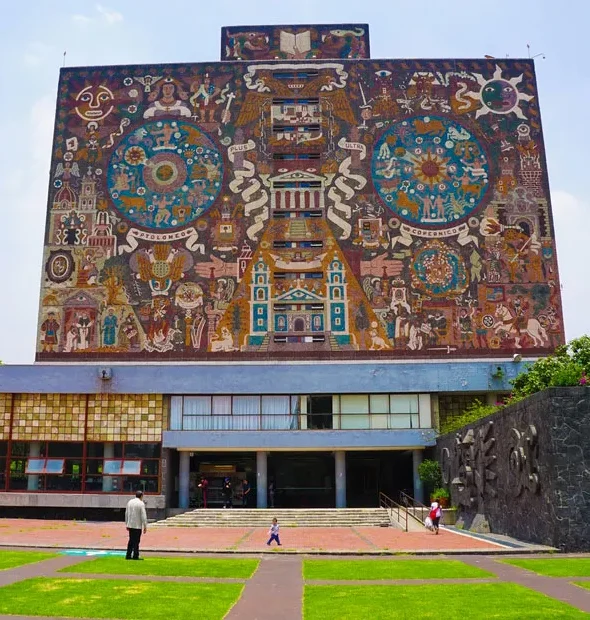Earlier this year, I applied to study abroad for four weeks in Mexico through Sussex’s Global Excellence Summer Programme (GESP). GESP is funded through the Turing Scheme, a government grant named after Alan Turing, a British mathematician and computer scientist who helped crack the Enigma code during WW2. Turing studied abroad at Princeton University between 1936 and 1938.
In October 2024, the University of Sussex was given £600,000 by the Turing Scheme for the fourth year in a row, allowing it to fund the studies of 164 Sussex students. The programme is aimed at supporting students from widening participation backgrounds to study around the world in prestigious universities, such as the Universidad Nacional Autónoma de México (UNAM).
Whilst UNAM has multiple campuses in Mexico City, it also has satellite campuses across the country. I studied in one of these satellite campuses, the Center of Teaching for Foreigners in Taxco. Taxco, a city in the Southern state of Guerrero, is a three-hour drive from Mexico City and known for its silver mining. The Center of Teaching for Foreigners is the main location that teaches the Spanish language and Mexican culture to non-Spanish speakers. As Taxco is a silver city, we also had many opportunities to visit local markets, where silver was priced by purity and weight. This was a perfect time to practice our Spanish as we searched for the perfect souvenirs for our loved ones.
Our days usually included four to five hours of classes at the CEPE. A typical day included a two-hour language class followed by a culture workshop on subjects like Latin dance, traditional cooking, and artisanal crafting. My personal favourite was the traditional cooking class, where I tasted the unique flavor of tuna, a prickly cactus pear native to Mexico. Tuna has a unique flavour, a blend of kiwi and berry. In Mexico, it is a common fruit drink or ‘agua fresca’ – refreshing fruit drinks to help cool down in the Mexican heat. In the local markets, I tried other aguas frescas like the milky, cinnamon-spiced Horchata and Jamaica, another fruity drink made from hibiscus flower.
Our accommodation was a striking three-story house, usually referred to as ‘the casa’, a fifteen-minute walk from the school. I shared a room with three other girls, which fostered a closeness I had yet found in other friends at Sussex. We always felt safe – both in the streets and in the casa, which was guarded by security and a sweet elderly dog named Rosca.
During our second week in Mexico, we took a weekend trip to Mexico City, where we stayed in a four-star hotel in the heart of Mexico City. We ate and shopped at Grand International stores, such as Chuck E Cheese and American Eagle. We also had the unique experience of watching a light show in the evening, as the city celebrated the 700th anniversary of the founding of Mexico City by the Mexica People, more popularly known as the Aztecs. The light show took place in the Zócalo – the city’s central plaza – home to the National Palace, the official residence of the President.
After experiencing the metropolitan city, we travelled to another nearby state, Morelos, where we visited the pre-Columbian archaeological ruins of Xochicalco. Xochicalco comprises pyramids, temples, and baths, and was made a UNESCO World Heritage site in 1999.
Summer school was overall a once-in-a-lifetime experience to experience life in Mexico and have my studies supported by extraordinary professors. I will treasure the memories of the sweaty walks to school with my classmates, our late-night chats whilst eating pizza on the terrace, and our spontaneous trips to the gelato shop after class. Not only were we able to experience studying in a foreign country, but we were also able to immerse ourselves in the culture, eating at traditional taquerias and befriending locals.
Another article you may enjoy: https://thebadgeronline.com/2025/10/sussex-palestine/

